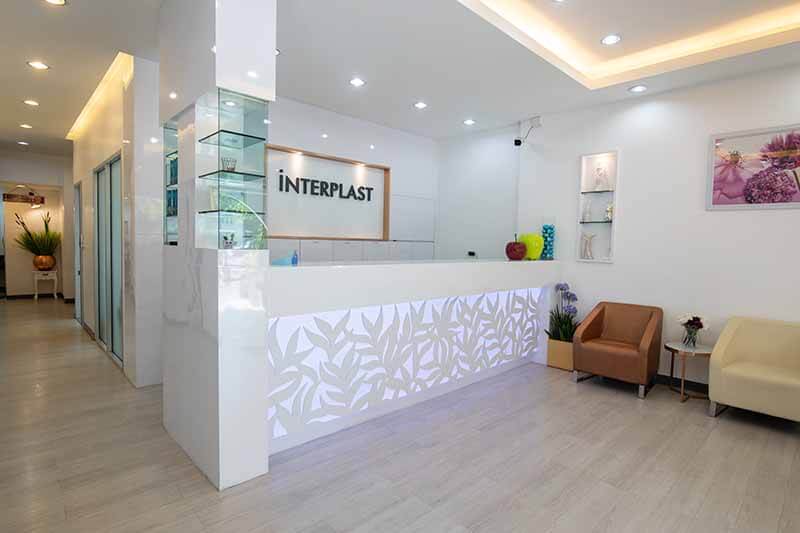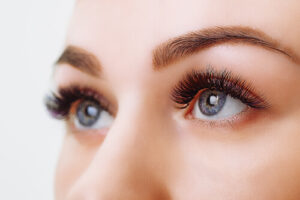Can Fat Transfer Help Dark Circles Under the Eyes?
Dark circles under your eyes – aka “panda eyes” – are a frustrating problem. Extremely common and hard to treat, dark circles are fortunately not a cause for concern. However, most people would prefer not to have them as they can make you look older, more tired, and just a shade off your best.
Known medically as periorbital hyperpigmentation, or POH, the dark circles usually appear as shades of brown, blue, black, or purple. More common in older adults, people with a genetic predisposition, and people with dark skin tones, solving the condition is more difficult than you’d think.
Numerous home remedies, creams, and ointments promise to remove the dark circles under the eyes with mixed results. So, how to get rid of dark circles? Fat transfer is a potential option that uses nanofat to add more substance around the lower eyelid and permanently remove dark circles under your eyes.
Table of Contents

What Causes Dark Circles?
Dark circles under your eyes are usually associated with fatigue. It’s by far the most common cause. Due to sleep deprivation, your skin can appear dull or pale, exposing the underlying dark tissue and blood vessels.
The skin surrounding your eye is extremely thin. So, dark circles typically occur because the subdermal tissue and blood vessels show through the translucent skin. The question is, what else can thin the skin?
- Age:
As you age, your skin becomes thinner. The decrease in collagen and the thinning of skin makes the dark blood vessels beneath your skin more visible, causing the area below your eyes to darken. - Dehydration:
Dehydration is a common cause of dark circles under your eyes. When your body is not receiving the proper amount of water, the skin beneath your eyes begins to look dull, and your eyes appear sunken. - Eye Strain:
Staring at your television or computer screen can cause significant strain on your eyes. This strain can cause blood vessels around your eyes to enlarge. As a result, the skin surrounding your eyes can darken.
But that’s not the only cause – the skin itself can become hyperpigmented or darker. Allergies, for example, trigger vasodilation (blood vessel expansion) and rubbing your eyes triggers pigmentation. Meanwhile, smoking and alcohol cause vascular problems, damage your skin, and create a sunken appearance.
Other factors to consider are genetics, sun exposure, eye strain, and certain medical conditions, e.g., thyroid disease.
What is Facial Fat Transfer?
Facial fat transfer, also known as fat grafting or facial fat injection, is a cosmetic procedure that involves transferring fat from one part of the body to the face. By increasing the subdermal fat, the procedure helps:
- Enhance facial fullness
- Smooth out wrinkles
- Improve facial contours
- Provide a more youthful, rejuvenated appearance
Nanofat vs. Microfat: What's the Difference?
It’s important to note that fat transfer to the under eye area differs slightly from other facial regions. While injecting larger fat particles can add volume, it may not necessarily address concerns around skin texture or rejuvenation.
In cosmetics, there are two primary types of fat:
- Nanofat:
Nanofat grafting involves the processing of fat to a very fine, liquid state, allowing for the injection of tiny fat particles. This technique is primarily used for skin rejuvenation, improving skin texture, and addressing finer lines or areas where traditional fat grafting can’t be used due to the need for a more delicate approach. - Microfat:
Microfat grafting refers to the use of slightly larger fat particles compared to nanofat and is designed for adding volume and contouring areas of the face. It’s effective for treating deeper wrinkles, enhancing facial features like cheeks or lips, and providing a more substantial yet natural, volumizing effect.
Nanofat for Under Eye Circles
Nanofat grafting has become the go-to treatment for under-eye circles. Because the fat cells are broken down into a fine, injectable solution, it’s suitable for skin rejuvenation from the inside. Microfats, on the other hand, are too bulky for the delicate and thin skin surrounding the eyes.
But how does it work? After all, there are no fat cells to plump up the skin and reduce the transparency effect.
Rich in adipose-derived stem cells and growth factors, nanofat stimulates the body’s natural healing and regeneration processes. That includes repair of damaged tissues, improved cellular function, and perhaps most importantly, collagen production. Together, this thickens the skin, provides greater strength and elasticity, and improves the skin’s texture and tone.
The Procedure
- Fat Harvesting:
Fat is extracted from the patient’s abdomen, thighs, or buttocks using a minimally invasive liposuction technique, ensuring a source of living fat cells for grafting. - Purification:
The extracted fat is then purified, a process that filters out damaged cells, blood, and other fluids to retain only healthy, viable fat cells for effective grafting. - Creating Nanofat:
This purified fat is further refined into nanofat, a very fine, fluid-like substance, by emulsifying and straining the fat to obtain the smallest fat particles, ensuring they can be precisely injected into the sensitive under-eye area. - Injection and Rejuvenation:
The nanofat is strategically injected into the under-eye region. Its rich content of stem cells and growth factors helps rejuvenate the area, stimulating collagen production, improving skin texture and elasticity, and diminishing the appearance of dark circles for a refreshed and more youthful look.
Recovery and Results
Nanofat grafting is a same-day procedure. So, after the approximately 1.5-hour appointment, you can go home immediately. It can take several days to weeks to see the final results. Depending on the initial volume that is absorbed, further treatments may be necessary.
However, the results speak for themselves. According to a 2020 study, published in the American Journal of Cosmetic Surgery, of the 20 women injected with nanofat, the results were:
- 100% reduction in skin smoothness
- 40% improvement in wrinkles
- 15% poor size reduction
- 10% improvement in redness

Facial Fat Transfer In Bangkok
The first step for anyone considering cosmetic treatments to correct dark circles or bags under their eyes is to consult a board-certified surgeon like Dr. Theerapong to discuss their options. Fat grafting and dermal fillers are all safe, effective procedures that can be performed at our Bangkok clinic using a local anesthetic. The most appropriate treatment depends on the type of issue to be corrected as well as your own individual goals.
Contact our expert team today for more information.














